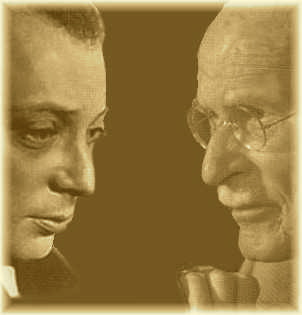I’ve been re-reading sections of Arthur I Miller’s terrific book, Deciphering the Cosmic Number: The Strange Friendship of Wolfgang Pauli and Carl Jung. In a section called Parallels and Coincidence, Miller talks about how Jung believed that in any discussion about dreams, physics and psychology, we should take a closer look at our notion of time and in particular, a close look at synchronicity. By this time, Jung had been exploring the concept since his early days in medical school.
As Jung delved further into mythology and alchemy, he developed his idea about “one world,” the unus mundo, in which all people are connected. As Miller wrote, “If there was one world, he reasoned, surely there should also be one mind, which he identified as the collective unconscious of humankind.”
This idea seemed particularly obvious when he consulted the I Ching because the advice the hexagrams provided appeared to be relevant to the moment in which he asked his question. “If he asked the same question a second time – at a different moment – the advice might be quite different.” So if the Ching’s answers held any significance at all, Jung wondered, how did the link between the psychic and physical sequence of events occur?
In the 1920s, Jung started to seriously explore parallels between out of body experiences – OBEs – and mental states. One day in 1928, Jung drew a mandala that looked to be very Chinese and that same day received Richard Wilhelm’s manuscript of his translation of the Secret of the Golden Flower. “To Jung, that was what synchronicity was all about,” wrote Miller.
“In the Western world, we usually assume that events develop sequentially, one after the other, by a process of cause and effect. But Jung was convinced that as well as a vertical connection, events might also have a horizontal connection – that all the events occurring all over the world at any one moment were linked as a kind of grand network. Thus, when one threw the coins to consult the I Ching, the throwing of the coins coincided with one’s feelings at that precise moment and the answer reflected the truth of that moment.”
Synchronicity is at work in all divination systems- the tarot, astrology, reading leaves in a teacup, even opening a book and pointing at a word on a page. In the moment the coins are tossed, the cards are drawn, the chart is erected, the answer is intrinsic to that moment.
As a psychologist, Jung was convinced that science couldn’t explain “certain remarkable manifestations of the unconscious.” He also knew that physicists wouldn’t touch acausality and hoped to find a way of developing his ideas with scientific rigor. And it was at that point that he met Nobel laureate Wolfgang Pauli. It wasn’t until 1948, though, that Jung and Pauli started exploring the concept of synchronicity more deeply.
Interestingly, because of the time in which they lived, Pauli and Jung kept their collaboration on synchronicity and physics to themselves, out of fear that their colleagues would laugh at them.
In that sense, perhaps, things have changed a little bit – but not enough. With the technology and instant access to information available to us now, I wonder how these two men would fare in the 21st century.









oh dear, if i try to think how one thing happens to result in another, or easier said, if i hadn’t done x, y wouldn’t have happened, my mind boggles by the amount of ‘cogs’ that turn in our universe to create that which is now, and where we are now… which leads me to believe that there has to be a greater thing out there than coincidence alone.
I think coincidence/synchronicity is just the tip of the iceberg, the part that we see and to see it, we have to be aware of it. That’s evident in your beautiful poetry, shadow. Poets expose the nine/tenths that isn’t visible. That’s where the real truth lies.
The quote ‘as well as a vertical connection, events might also have a horizontal connection’ is interesting. But why not also of all of the other degrees between vertical and horizontal as well. Got me thinking – thanks!
all directions!
You blew me away with this synchro as it related to me. I will have to write to yo off line about it for the moment.
Sunday kisses –
Can’t wait to hear!